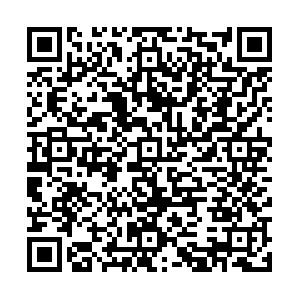Analysis of the transmission characteristics of four childhood infectious diseases in China
-
摘要:
目的 了解4种传染病发病数的周期性、传染率及其季节性的变化模式,为4种传染病的防控提供理论支持。 方法 选取百日咳、猩红热、风疹、腮腺炎这4种有代表性的儿童易感传染病作为研究对象,分别建立时间序列易感者-感染者-恢复者(time series susceptible infected recovered, TSIR)模型,使用马尔科夫蒙特卡洛方法估计模型中的参数,分析这4种传染病传染率的季节性模式;根据不同传染病传染率的季节性模式,采取针对性控制措施,分析对未来发病数的影响效果。 结果 4种传染病的传染率呈季节性变化,最低传染率均发生在7―8月,猩红热、风疹、腮腺炎的最高传染率发生在2―3月。传染率季节性受学生放假、春运影响。有无免疫实施不影响传染率的季节性模式。传染率季节性与病原体的异同存在关联性。 结论 4种儿童易感传染病的传染率均具有季节性变化的特点,相应的季节性防控措施对减少发病数更为有效。 Abstract:Objective This research aimed to understand the periodical pattern, transmission rate, and seasonality of four childhood infectious diseases, and to provide theoretical support for prevention and control. Methods We selected four typical childhood infectious diseases, including pertussis, scarlet fever, rubella, and mumps, as research objects. And established time series susceptible infected recovered (TSIR) model respectively for four diseases. The Markov chain Monte Carlo methods were used to estimate the parameters of TSIR models and analyze the seasonal patterns of the transmission rate. According to the seasonal pattern of different infectious diseases' transmission rates, targeted prevention and control measures were adopted to analyze the effect on the number of future cases. Results The transmission rates of the four infectious diseases showed seasonal changes. The lowest transmission rates occured from July to August. The highest transmission rates of scarlet fever, rubella, and mump were from February to March. The transmission rate was affected seasonally by school holidays and the Spring Festival period. Having or not having immunization implementation did not affect the seasonal pattern of the transmission rate. The seasonality of transmission rate was related to the types of pathogens. Conclusions The transmission rates of the four childhood infectious diseases are characterized by seasonal changes. It is more effective to consider seasonality when implementing prevention and control measures to reduce the number of cases. -
表 1 TSIR模型中的参数估计结果
Table 1. Parameter estimation results in the TSIR model
估计参数 百日咳 猩红热 风疹 腮腺炎 β0 2.64×10-8 4.08×10-8 1.35×10-8 1.91×10-8 β1max 35.6% 68.6% 172.0% 44.1% β2 49.2% 63.8% 78.7% 50.4% Rn 1.24 1.05 1.20 1.70 S(95% CI)值 0.041(0.030~0.049) 0.056(0.054~0.058) 0.086(0.076~0.096) 0.095(0.089~0.100) ρ(95% CI)值 0.007 0(0.006 0~0.008 0) 0.002 5(0.001 9~0.002 8) 0.070 0(0.057 0~0.088 0) 0.140 0(0.135 0~0.147 0) 注:β0、β1max、β2、Rn、S、ρ分别为传染率均值、传染率偏离均值的最大幅度、传染率偏离中间值幅度、平均有效再生数、平均易感者比例、报告率。 -
[1] 李兰娟. 我国感染病的现状及防治策略[J]. 中华临床感染病杂志, 2008, 1(1): 1-6. DOI: 10.3760/cma.j.issn.1674-2397.2008.01.003.Li LJ. Status and control strategy for infectious diseases in China[J]. Chin J Clin Infect Dis, 2008, 1(1): 1-6. DOI: 10.3760/cma.j.issn.1674-2397.2008.01.003. [2] Winter K, Glaser C, Watt J, et al. Pertussis epidemic-California, 2014[J]. MMWR Morb Mortal Wkly Rep, 2014, 63(48): 1129-1132. [3] Rohani P, Zhong X, King AA. Contact network structure explains the changing epidemiology of pertussis[J]. Science, 2010, 330(6006): 982-985. DOI: 10.1126/science.1194134. [4] Liu Y, Chan TC, Yap LW, et al. Resurgence of scarlet fever in China: a 13-year population-based surveillance study[J]. Lancet Infect Dis, 2018, 18(8): 903-912. DOI: 10.1016/S1473-3099(18)30231-7. [5] Lamagni T, Guy R, Chand M, et al. Resurgence of scarlet fever in England, 2014-16: a population-based surveillance study[J]. Lancet Infect Dis, 2018, 18(2): 180-187. DOI: 10.1016/S1473-3099(17)30693-X. [6] 董彦会, 陈曼曼, 王丽萍, 等. 中国6~22岁学生群体甲乙丙类传染病流行趋势[J]. 北京大学学报(医学版), 2021, 53(3): 498-505. DOI: 10.19723/j.issn.1671-167X.2021.03.010.Dong YH, Chen MM, Wang LP, et al. Epidemiological characteristics of infectious diseases of group A, B and C among Chinese students' population[J]. J Peking Univ Health Sci, 2021, 53(3): 498-505. DOI: 10.19723/j.issn.1671-167X.2021.03.010. [7] Keeling MJ, Rohani P. Modeling infectious diseases in humans and animals[M]. Poinceton: Princeton University Press, 2008: 53-55. [8] 中华医学会儿科学分会感染学组, 《中华儿科杂志》编辑委员会. 中国儿童百日咳诊断及治疗建议[J]. 中华儿科杂志, 2017, 55(8): 568-572. DOI: 10.3760/cma.j.issn.0578-1310.2017.08.004.Infectious Diseases Group Pediatrics Society of Chinese Medical Association, Editorial Board of Chinese Journal of Pediatrics. Recommendation for diagnosis and treatment of Chinese children with pertussis[J]. Chin J Pediatr, 2017, 55(8): 568-572. DOI: 10.3760/cma.j.issn.0578-1310.2017.08.004. [9] 马超, 郝利新, 苏琪茹, 等. 世界卫生组织194个成员国麻疹、流行性腮腺炎、风疹减毒活疫苗常规免疫程序、报告接种率与发病水平现状分析[J]. 中国疫苗和免疫, 2015, 21(3): 241-247, 254. DOI: 10.19914/j.cjvi.2015.03.001.Ma C, Hao LX, Su QR, et al. Vaccination schedules, reported vaccination coverage rates, and incidences of measles, mumps and rubella of the 194 member states of the World Health Organization. [J]. Chinese Journal of Vaccines and Immunization, 2015, 21(3): 241-247, 254. DOI: 10.19914/j.cjvi.2015.03.001. [10] 苏琪茹, 姚开虎. 疫苗时代疫苗可预防疾病流行病学和临床表现的变化[J]. 中国当代儿科杂志, 2019, 21(3): 195-198. DOI: 10.7499/j.issn.1008-8830.2019.03.001.Su QR, Yao KH. Epidemiological and clinical features of vaccine-preventable diseases in vaccine era[J]. Chin J Contemp Pediatr, 2019, 21(3): 195-198. DOI: 10.7499/j.issn.1008-8830.2019.03.001. [11] Zhao J, Hu X. The complex transmission seasonality of hand, foot, and mouth disease and its driving factors[J]. BMC Infect Dis, 2019, 19(1): 521. DOI: 10.1186/s12879-019-4153-6. [12] Fine PE, Clarkson JA. Measles in England and Wales--Ⅰ: an analysis of factors underlying seasonal patterns[J]. Int J Epidemiol, 1982, 11(1): 5-14. DOI: 10.1093/ije/11.1.5. [13] 方海旭, 陈佶, 赵继军. 青岛市麻疹免疫前后传染率分析[J]. 复杂系统与复杂性科学, 2018, 15(1): 80-85, 93. DOI: 10.13306/j.1672-3813.2018.01.012.Fang HX, Chen J, Zhao JJ. Analysis of transmission rate of measles in Qingdao[J]. Complex Systems and Complexity Science, 2018, 15(1): 80-85, 93. DOI: 10.13306/j.1672-3813.2018.01.012. [14] Metcalf CJ, Bjørnstad ON, Grenfell BT, et al. Seasonality and comparative dynamics of six child hood infections in pre-vaccination Copenhagen[J]. Proc Biol Sci, 2009, 276(1676): 4111-4118. DOI: 10.1098/rspb.2009.1058. [15] Mahmud AS, Metcalf CJ, Grenfell BT. Comparative dynamics, seasonality in transmission, and predictability of childhood infections in Mexico[J]. Epidemiol Infect, 2017, 145(3): 607-625. DOI: 10.1017/S0950268816002673. [16] Yorke JA, London WP. Recurrent outbreaks of measles, chickenpox and mumps. Ⅱ. Systematic differences in contact rates and stochastic effects[J]. Am J Epidemiol, 1973, 98(6): 469-482. DOI: 10.1093/oxfordjournals.aje.a121576. [17] Becker AD, Grenfell BT. Tsir: an R package for time-series Susceptible-Infected-Recovered models of epidemics[J]. PLoS One, 2017, 12(9): e0185528. DOI: 10.1371/journal.pone.0185528. [18] Jackson C, Mangtani P, Fine P, et al. The effects of school holidays on transmission of varicella zoster virus, England and Wales, 1967-2008[J]. PLoS One, 2014, 9(6): e99762. DOI: 10.1371/journalpone.0099762. [19] Bjørnstad ON, Finkenstädt BF, Grenfell BT. Dynamics of measles epidemics: estimating scaling of transmission rates using a time series SIR model[J]. Ecol Monogr, 2002, 72(2): 169-184. DOI: 10.1890/0012-9615(2002)072[0169:DOMEES]2.0.CO;2. [20] Ferrari MJ, Djibo A, Grais RF, et al. Rural-urban gradient in seasonal forcing of measles transmission in Niger[J]. Proc Biol Sci, 2010, 277(1695): 2775-2782. DOI: 10.1098/rspb.2010.0536. [21] Jandarov RA. Inference with implicit likelihoods for infectious disease models[D]. Pennsylvania: Pennsylvania State University, 2012. [22] Li S, Ma C, Hao L, et al. Demographic transition and the dynamics of measles in six provinces in China: a modeling study[J]. PLoS Med, 2017, 14(4): e1002255. DOI: 10.1371/journal.pmed.1002255. [23] 钟业工. 小儿急性呼吸道病毒感染和细菌感染的鉴别诊断[J]. 实用儿科临床杂志, 1988, (3): 161-163. DOI: 10.3760/cma.j.issn.2095-428X.1988.03.118.Zhong YG. Differential diagnosis of acute respiratory tract viral infection and bacterial infection in children[J]. Chinese Journal of Applied Clinical Pediatrics, 1988, (3): 161-163. DOI: 10.3760/cma.j.issn.2095-428X.1988.03.118. -





 下载:
下载:



